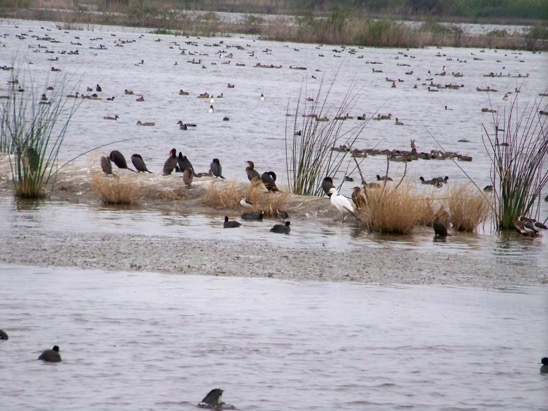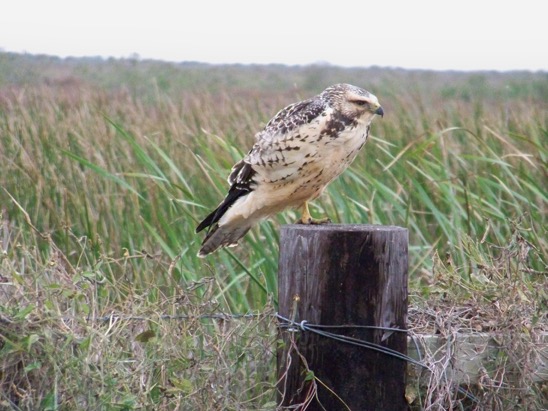For the past two years I have scheduled a Houston Sierra Club outing for the Great Egret Ridge Trail in the Trinity River National Wildlife Refuge (TRNWR). Normally, this would not be hard to do. The Houston Sierra Club helped flag out this 6 miles of trails and we have unofficially hiked the trail system several times.
Hardly anyone knows about this trail system, which leads to scenic vistas on the Trinity River with huge, white, sandbars and cypress swamps and bottomland hardwood forests. In other words, a real neat place where the Houston Sierra Club can introduce people to the “Joys of Nature”.
Unfortunately, floods in seemingly biblical proportions resulted in the cancellation of this hike three times in 2015, and now I was faced with the same problem on May 7th. After several weeks of heavy rains the trail system was flooded again! May 7th was supposed to be a sunny day. Do I cancel the outing? Do I change the outing to another place? If so, what other place?
Luckily for me there was an alternative not far away. Anahuac National Wildlife Refuge is 34,000 acres of prime wildlife habitat in Chambers County on East Galveston Bay. It is about 35 miles away from Liberty, where our TRNWR hike was scheduled. I decided that a beautiful sunny day at the end of Spring and during bird migration was too good to pass up. I announced the outing change on our Meet-up Site.
Unfortunately, when Saturday came most people who had signed up did not show. I understood that several of people wanted to hike but they missed an incredible visit to Anahuac National Wildlife Refuge and missed seeing many wildlife friends.
The folks who did make the outing, Taylor, Elizabeth, David, Michael, and Lida, were in for a rare treat. We first met at the Texas Chenier Plain National Wildlife Refuge Complex on FM 563, two miles south of Interstate 10. This is the headquarters for the Anahuac, McFaddin, and Texas Point National Wildlife Refuges. The headquarters is located on Lake Anahuac, which used to be named Turtle Bayou for the sea turtles that used this bay which is now a freshwater lake.
We first looked at the small pond behind the headquarters. We were not disappointed! A ribbon snake sunned itself on the bridge over the pond; a large bullfrog hid in the Pickeral Weed; and a Green Anole lizard scampered away as we approached.
We walked along the Chenier (a sand ridge deposited by ancient rivers or streams a long time ago) and marveled at the hickories, ash, pines, and oaks that lined both sides of the trail. The Clasping Leaf Coneflowers, Wild Petunias, Texas Dandelions, morning glories, and penstemons added bright accents to the shade of the woods.
Michael, who is a heck of a birder, pointed out a Yellow-billed Cuckoo and said he heard a Great-crested Flycatcher in the forest. Blue Jays and Northern Cardinals screamed overhead or called in the distance as we continued our walk to the Cypress Swamp that surrounds Lake Anahuac.
We moved along the boardwalk slowly and heard and then saw a Prothonotary Warbler, brilliant in its bright, yellow suit. A Gray Squirrel moved quickly overhead on a tree limb and a Red-eared Slider rested on a partly submerged log. Unfortunately, the invasive aquatic plant, Giant Salvinia, could be seen everywhere and covered most of the water's surface.
We stood for awhile at the end of the boardwalk admiring the Bald Cypress, Green Ash, and Buttonbush trees. Then I saw a bird land on a tree ahead of us and we all used our binoculars to see what it was. It was not one, but a pair of Red-bellied Woodpeckers. They hopped up the tree looking for insects for their mid-morning meal.
We soon headed back on the trail to the parking lot and then drove to Anahuac National Wildlife Refuge. As we drove down the entrance road we observed Scissortail Flycatchers, Killdeer, Cattle Egrets, Snowy Egrets, Mockingbirds, Starlings, and hundreds of Mexican Primroses which welcomed us to the refuge.

We stopped at a pond located near the butterfly garden and admired the blooming, dark red, Coral Bean plants. We added Turkey Vulture, Common Nighthawk, Barn Swallow (whose mud nests could be seen within the covered picnic area), Tri-colored Heron, Loggerhead Shrike, Red-winged Blackbird, White-faced Ibis, Brown Cowbird, and Black-bellied Whistling Duck to our growing list of birds.
As we drove down the road we looked carefully along the wetlands that surrounded us. Our scrutiny was soon rewarded with Common Gallinules and Rosette Spoonbills, my favorite pink, coastal bird. Then I saw what I was looking for! An American Alligator floated with just its head and a small part of its back exposed above water. Then there was another and another! What a great sight. Prehistoric reptiles still swimming through time.
Soon our list of birds was further blessed with Eastern Kingbird, Marsh Wren, Yellow-crowned Night Heron, Greater Yellow-legs, Pied-billed Grebe, American Coot, Common Yellow-throat, and was it possible, a Black Rail! Michael was on fire and he confided in me that he also heard a Virginia Rail.
As we scanned the wetlands we saw Spotted Garfish slowly swimming along and under the blooming white water lilies. A cornucopia of birds came to greet us including White Ibis, Foresters Tern, Mottled Ducks, Green Heron, Black-necked Stilts, Orchard Orioles, Laughing Gulls (laughing at us, of course), Double-Crested Cormorants, Kingfisher, Purple Gallinule, Black Terns, Black Vulture, Dickcissel, Mourning Doves, and on and on. We stopped briefly to remove a mud turtle from the road and placed it in the interminable wetlands that extended for acres in front of us.
We drove down to East Bay and saw Meadowlarks, a Common Grackle, Savannah Sparrow, and Willets. Seaside Goldenrods gently bent in the light breeze that kept the mosquitoes at bay. About 50 bird species in all. What a day! What a place!
Some day I will lead a hike to TRNWR. But I will always be happy and satisfied with a visit to Anahuac National Wildlife Refuge.
Brandt Mannchen
May 8, 2016
